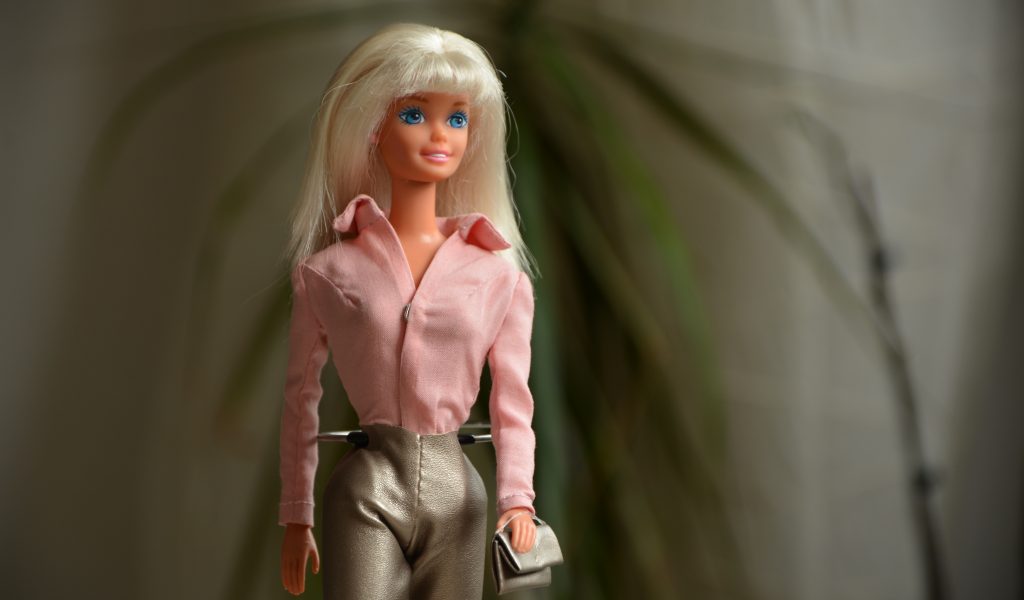We all look like Barbie — or at least, that’s the plan

Maggie John, Features Editor, investigates Barbie’s history of championing women’s rights and their move to finally become more inclusive.
Ruth Handler was not pleased with the choice of toys her daughter had to play with. Whereas her son could play with astronauts or firefighters, inspiring his future endeavours of greatness, her daughter could choose to play a mother or a caregiver. Taking matters into her own hands, Handler came up with Barbie, deciding to show little girls they had choices and they too, could be anything they wanted to be.
How did Barbie come to be?
Handler debuted Barbie at the New York Toy Fair in 1959, and no one was prepared for the imminent success which followed. Until then, little girls had played with dolls who resembled babies or toddlers. They certainly had not played with a doll who was wearing a black and white striped swimsuit – yet “Barbie took the world by storm” and little girls began to see a different future to the one they’d been told.
Little children and adults alike, know who Barbie is. In the 1980s, Andy Warhol, who painted American icons, painted Barbie. Throughout the years, Barbie collaborated with an array of designers and in 2009, Barbie held a runway show at Mercedes-Benz Fashion Week in celebration of her 50th anniversary. Her cultural impact is undeniable, within the USA and across the globe.
Barbie has always pushed for and championed women’s rights. Before women could even open their own bank accounts in the United States, Barbie bought her first Dreamhouse, becoming a symbol of “independence and empowerment”. In the 1980s, Barbie “broke the glass ceiling” when they realised a CEO doll, who celebrated the “workplace evolution of the era” and proved women could have their cake and eat it too. Barbie has not just championed working women, but She has continually championed women in politics, too. In fact, Barbie has ran for President of the United States in every election since 1992. In 2016, they released an “all-female ticket with a president and vice-president doll set”, reminding little girls that they really can be anything, including “leader of the free world”.
Where did Barbie get it wrong?
While people’s opinion on Barbie may differ, the way they have encouraged little girls to go after their dreams is unparalleled, and was often ahead of its time. Unfortunately, most of their encouragement was tailored at white, able-bodied, blonde girls and they often missed the mark Despite that, they have often missed the mark when reminding all little girls that they could do whatever they set their mind too.
Unfortunately, most of their encouragement was tailored at white, able-bodied, blonde girls
Although Barbie released “Christie” in support of Equal Rights in 1965 and a Hispanic doll in the 1980s, it didn’t go far enough. It wasn’t until 2016 that Barbie introduced new body types including “curvy, petite and tall”. Barbie seemed to miss the memo that all women, not just slim and blonde white women, deserve to see themselves represented in doll form.
What are Barbie doing in an attempt to become more inclusive?
The company has proved quick to adapt and in recent years, Barbie has begun to reflect the desires of her customers. In 2015, Barbie launched a vlog on YouTube to talk directly to girls about issues they face, including depression, bullying and the benefits of meditation, but it still wasn’t enough. Barbie made no real effort to include young women with disabilities. Kim Culmone, the global head of design at Barbie, revealed to Teen Vogue in 2019, that “a doll in a wheelchair was one of the most requested items through our consumer hotline”, emphasising how “it’s important to listen to our consumers”. Culmone explained that creating more inclusive dolls “is a continuation of our mission to show all they have limitless potential”. It’s important that every child sees themselves reflected in the world around them.
In 2019, Barbie released a blonde, blue-eyed Barbie in a wheelchair, along with a brunette doll with a prosthetic leg. In 2020, the company released a black doll with vitiligo and in 2021, they released a black doll with an afro hairstyle, another with alopecia and a Ken doll with long hair. Although they were steps in the right direction, they weren’t particularly inclusive, particularly the decision to only release a blonde-haired, blue-eyed Barbie in a wheelchair. More recently, Barbie have teamed up with Rose Ayling-Ellis, Strictly Come Dancing’s 2021 winner, to create their first doll with hearing aids. Rose, who has been deaf since birth told BBC’s Newsbeat “it’s so important for children to be able to see themselves represented in the toys they play with”, revealing that when she was little, “(she) would draw hearing aids of her Barbie dolls to make them look like (her)”. Hopefully, little girls like Rose won’t have to do that anymore.
The reality is today’s children and those of future generations to come, will associate Barbie with something completely different than we did and that is most certainly a good thing. They have the opportunity to make change and to help children across the world accept themselves. Here’s hoping they only continue.


